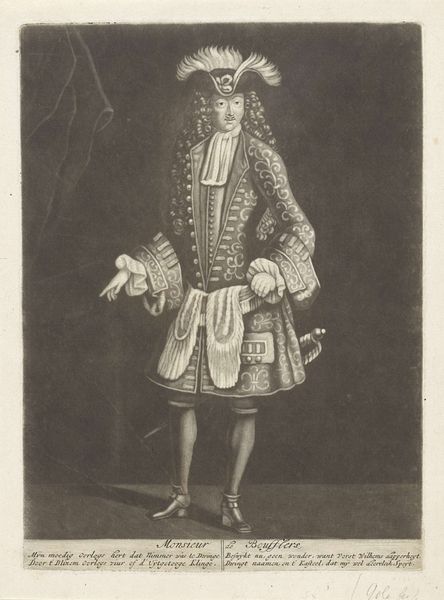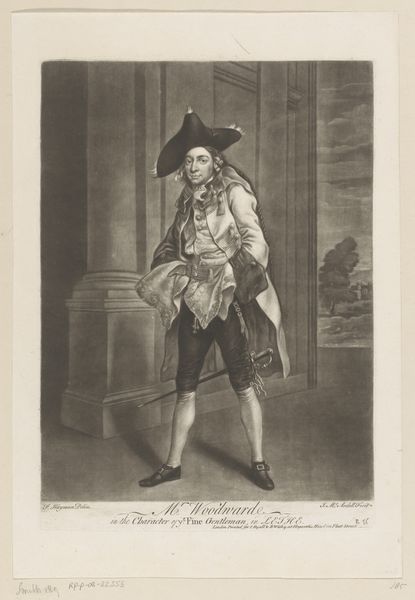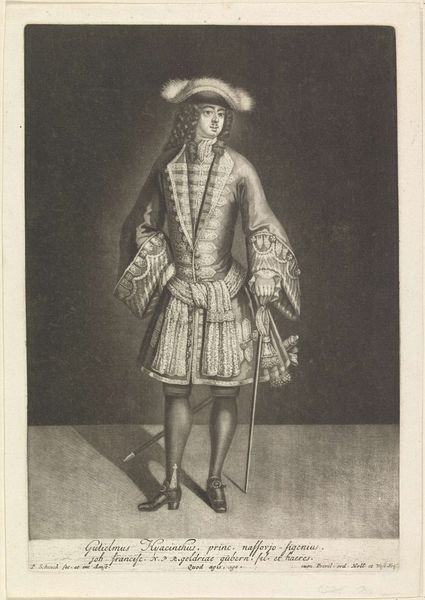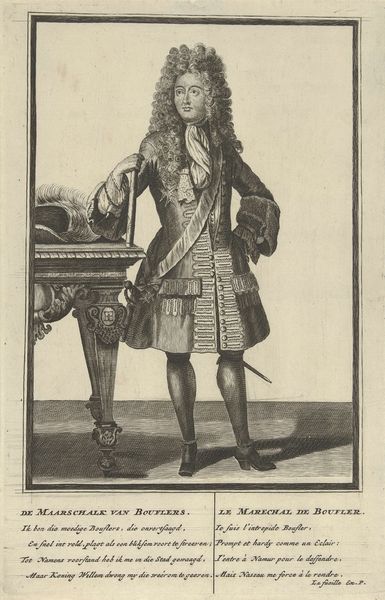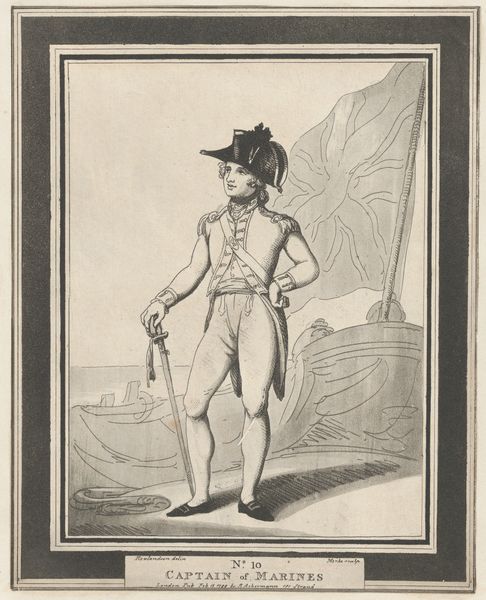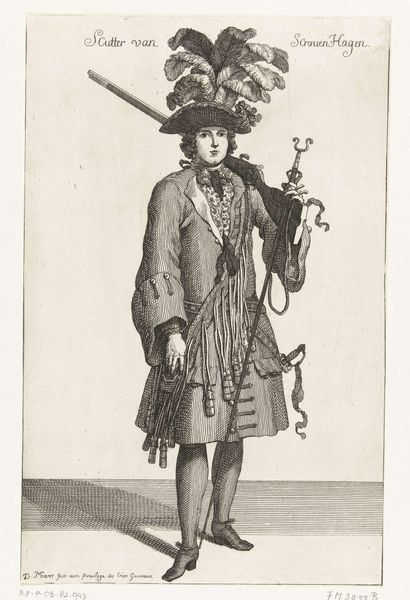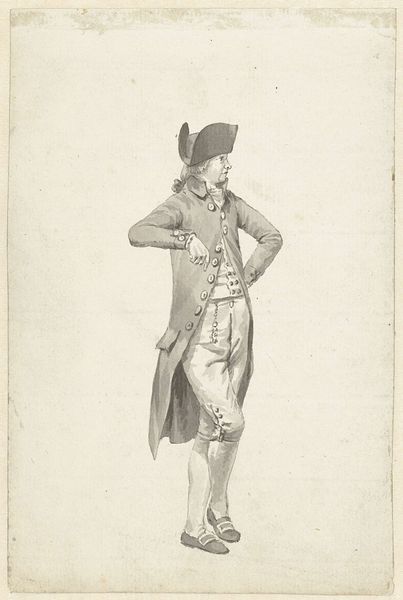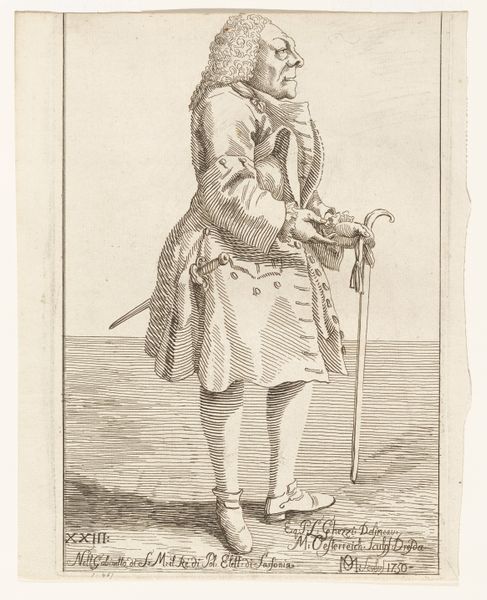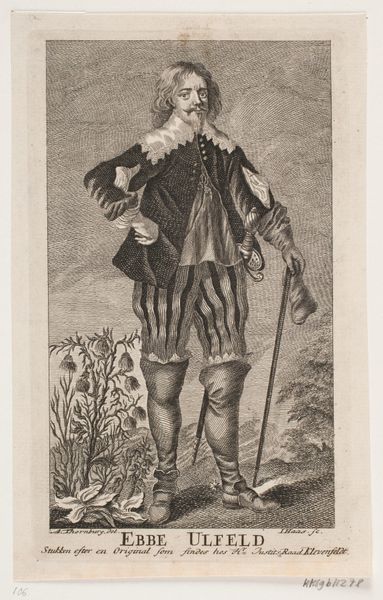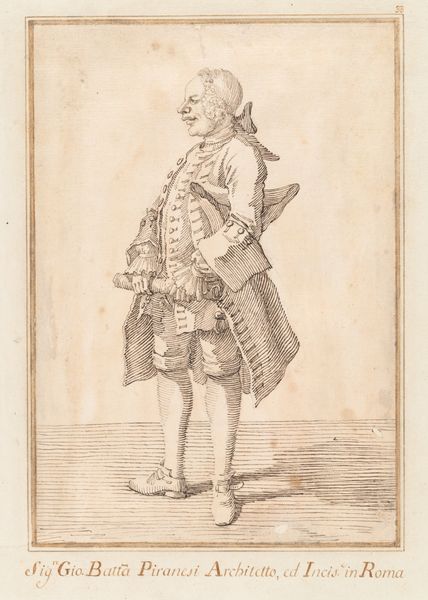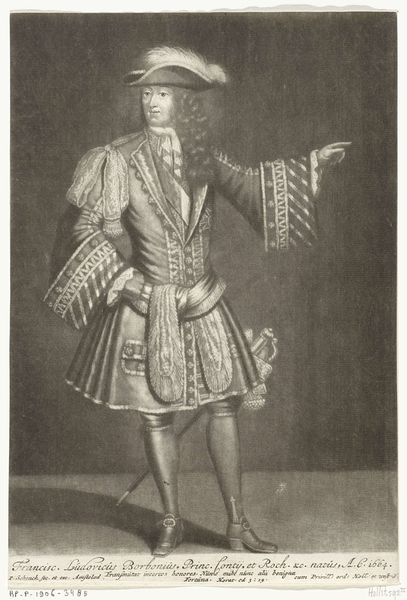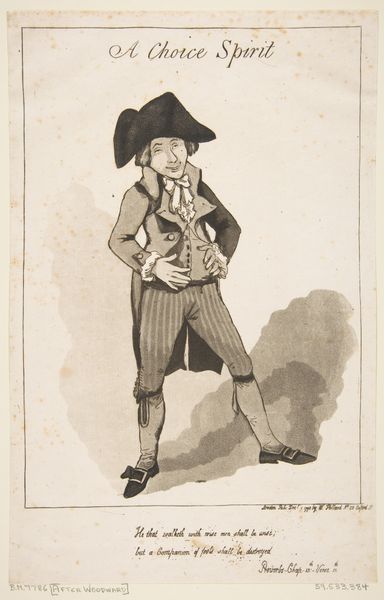
drawing, pencil, engraving
#
portrait
#
pencil drawn
#
drawing
#
baroque
#
pencil sketch
#
charcoal drawing
#
figuration
#
pencil drawing
#
pencil
#
pencil work
#
academic-art
#
engraving
Dimensions: height 358 mm, width 250 mm
Copyright: Rijks Museum: Open Domain
Curator: Let’s turn our attention to "Portret van Henry Woodward als de heer uit Lethe," created between 1748 and 1765 by James McArdell. It's currently held here at the Rijksmuseum. What are your initial thoughts? Editor: Well, it feels immediately like a stage setting. He’s poised, theatrical even. There's this controlled swagger that I find quite compelling and his elaborate hat looks faintly ridiculous. Curator: The figure's posture and attire indeed emphasize a performance aspect. McArdell has meticulously rendered the texture of the fabrics, from the lace at the neck to the heavy folds of the coat. These elements not only showcase his technical skill but also comment on social artifice. The etching beautifully balances detail and a certain ethereal quality that drawing techniques enable, offering depth through varying tonal gradations. Editor: The play of light and shadow really amplifies that theatrical feeling. And something about the monochrome palette evokes memory, like looking at an old photograph…a ghost captured mid-performance, still acting out his role in Lethe. Is he happy about that I wonder. Curator: Your insight regarding the "ghost" is intriguing when juxtaposed with semiotic interpretations. In it the subject is more present through art as representation than the physical form of the body ever could achieve, offering commentary on identity construction of celebrity. There's an element here perhaps best described as, 'the role is more real than the actor.' Editor: Hmm, "the role is more real…" I’d not quite considered it from that angle. But that does change the context – if that costume gives more tangible being. Makes you wonder if behind all the finery is just, well, oblivion, maybe even more like The Void rather than Lethe! The work takes on quite a melancholy twist there. It speaks volumes on mortality. Curator: Indeed, through the formal constraints and the interplay of shadow, texture, and line, mortality is precisely what this reveals about performance and celebrity, not only of that specific historical period, but a more timeless narrative arc too. A rewarding piece of insight to leave us pondering!
Comments
No comments
Be the first to comment and join the conversation on the ultimate creative platform.
